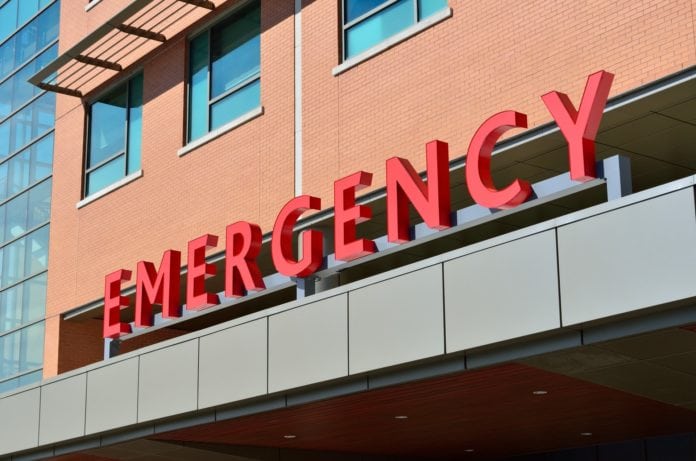A rural hospital in Pendleton, Oregon, is implementing a community health worker program targeting patients who frequently show up in the emergency department (ED) and who don’t qualify for home health care or hospice care.
But home health and hospice providers should still pay attention, as CHI St. Anthony’s experience in targeting so-called “frequent fliers” of the ED highlights the benefits of hospitals coordinating care with home health.
Lack of resources
The community health worker program, in part, from the sprung from the needs of patients around St. Anthony’s location. The hospital serves Umatilla County, Oregon, and is considered a remote-access hospital. There’s one local home health provider, and it’s a department of St. Anthony. The closest home health provider that’s not part of the hospital is 45 minutes away, and it doesn’t usually serve the area, Patricia Montgomery, St. Anthony’s director of case management, told Home Health Care News. Her work covers inpatients, emergency room and home health and hospice.
The hospital’s home health and hospice division currently serves about 45 patients, though this number can vary, she noted.
As a result of the needs of the rural population—and the fact that many patients don’t qualify for home health or hospice—St. Anthony’s launched a pilot community health worker program the first week of January. The program is set up under the home health and hospice umbrella. It is intended to help discharged patients set followup appointments, fill prescriptions, obtain medications and find other resources, all with the goal of keeping them from coming back to the emergency department.
“We’re just trying to provide care for these people who really don’t have any other access to care,” Montgomery said. “It’s not like they can go just join different programs.”
Emergency focus leads to coordination
The community health worker program stemmed from the hospital’s efforts to reach high ED utilizers. St. Anthony began targeting the highest utilizers of the ED in late 2015 and started with the goal of reducing multi-patient visits. The hospital uses technology from Collective Medical called Emergency Department Information Exchange, or EDIE, and turned to it to identify the emergency room’s highest users. It discovered 333 patients accounted for 18% of visits, Steve Hardin, a registered nurse and the emergency department manager at St. Anthony’s, told HHCN.
The hospital started communicating to those users, changed its narcotics policy to discourage patients who were seeking opioids and added a full-time case manager to the ED. It now uses the EDIE technology to flag high ED users and provide their information to everyone who might work with the patient.
“Part of what we’re really seeing is that at some point someone has to start coordinating,” Hardin said. “The hardest part has always been knowing which pieces are on the table and that’s where this system has really benefited, it’s knowing who to call.”
It was out of those efforts that the power of coordination came to light. St. Anthony has a home health registered nurse, but before the ED program began, a home health patient could go to the emergency department without the home health department knowing, both Hardin and Bailey explained.
Now the hospital has a list of its home health patients and includes them in the EDIE system, so when the patients arrive in the ER, the home health RN knows about the visit. Approximately one year ago, the hospital also began front-loading visits in the home, or doing more visits at the start of home health services, to provide more education and prevent the patient returning to the ER unnecessarily, Bailey explained.
Looking ahead
Since the program began in 2015, ED visit volume has dropped 10%. The community health worker program is aimed at providing extra resources to cut that volume even more, particularly for the chronically ill who need assistance at home.
“It’s so much information at discharge, and so with a community health worker they can come in and talk to you one day about resources, they can talk to you about how to get your medications the next day, they can have the nurse come and do some education for the medications that you’re taking,” Montgomery said. “It’s just another resource for the patient if they don’t qualify for home health or hospice.”
It’s care that fills a need in an area without many resources. Bailey, who has worked as a home health nurse and done consulting work, said home health agencies elsewhere should take note. Home health patients at St. Anthony’s are getting better education about their care, and the hospital workers are now on the same page about the conditions of those patients, she explained.
“The benefits for what home health can do in my opinion is to link up and get to know that emergency department, the sooner the better—whether you’re an agency or department—and start figuring out why those patients come in,” she said.
Written by Maggie Flynn




